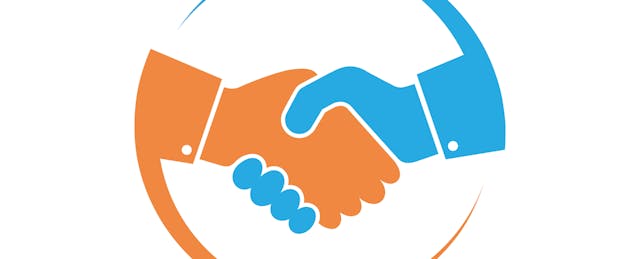Statistics about the higher lifetime earnings and lower rates of unemployment that come from earning a bachelor’s degree may feel like cold comfort to a college senior searching for her first professional job.
Her university career center seems like a likelier source of reassurance and guidance. And yet just 62 percent of college students report having ever visited their institutions’ career centers or used their affiliated online tools, according to a 2017 Gallup survey. About 35 percent of seniors never have.
To address the twin realities that many students worry about their employment prospects but don’t take advantage of traditional campus career resources, more than 800 colleges have adopted the job recruitment platform Handshake. This week, the company announced plans to make its services available for free to all U.S. students of four-year colleges (whether or not their institution has adopted the tool).
Several technology companies are trying to shake up recruiting, aiming to help employers hungry for new sources of labor find workers who have the right skills but lack the right connections or university brands. Digital tools include recorded video interview systems that analyze applicants’ micro-expressions and databases of workers built with information scraped from social media.
Handshake uses machine learning to help students stand out and connect with recruiters by prompting them to self-report their skills, GPA, coursework, career interests and desired company culture qualities. To gather data about the latter to present to users, Handshake asks students and alumni to review companies where they’ve worked or interned.
The company’s tactic of tapping into pre-existing career center systems has yielded 14 million student participants, although adoption on campus isn’t universal. On average, Handshake sees about 45 percent activation across the student body on its client campuses. That rises to 65 percent by senior year—roughly equivalent to the results of the Gallup report.
But some leaders of client universities have previously reported significantly improved levels of student engagement with campus career resources. Handshake’s mobile-friendly platform facilitates personal interactions between students and recruiters, which makes it more appealing to aspiring professionals than many other career-services portals, Andy Chan, vice president for innovation and career development at Wake Forest University, told The Chronicle of Higher Education in 2016.
Some students at universities that use Handshake have voiced concerns about private information being shared without their knowledge. Privacy settings have since been clarified, and users have the option to remain anonymous or withhold information about their GPAs, company co-founder Garrett Lord told Inside Higher Ed.
Handshake has attracted more than 400,000 employers, who typically use the system to search for potential job candidates. Some of those companies seem to use the platform to recruit rather traditionally, albeit online, by targeting students who attend particular institutions.
“Most employers have a specific set of schools they care about,” says Jonathan Stull, the company’s COO. “Handshake makes it easy to find.”
Still, some employers are intentionally using the platform to broaden their applicant pools. For example, since using the platform, PayPal reports receiving nine times more women applicants, nine times more black applicants and 14 times more Latinx applicants than previously, according to Handshake. The platform also tries to encourage hiring managers to branch out by recommending they consider students at institutions similar to ones already in their recruitment portfolios.
“When I was at Wellesley overhauling our career education, it was a huge benefit to us,” says Christine Cruzvergara, Handshake’s vice president of higher education and student success and former career center leader at Wellesley College and George Mason University. “We became more visible to employers not coming to campus before.”
The move to include students at all four-year universities may go further toward helping the company fulfill what Stull calls its mission of expanding job opportunity no matter a student’s school, major or family circumstances. Students at universities that pay an annual license fee for the company’s software will retain certain advantages, he added, such as easier integration with other services their career centers offer.


